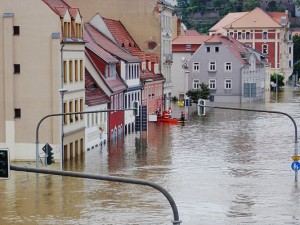 Portsmouth was one of the first UK cities to benefit from a dedicated sewerage system in 1865. The system, which combined foul and surface water systems, was adequate for the times because with less paved areas the flows were lower, and flows were discharged into the sea untreated.
Portsmouth was one of the first UK cities to benefit from a dedicated sewerage system in 1865. The system, which combined foul and surface water systems, was adequate for the times because with less paved areas the flows were lower, and flows were discharged into the sea untreated.
The City of Portsmouth’s drainage network has continued to develop since, but was still dependent on the use of combined sewers and the Eastney Pumping Station. Two interceptor sewers running north to south on the western and eastern sides of the island now serve the City.
Historically, incoming flows exceeded the capacity of the system during periods of high rainfall, and excess flow was pumped from the Eastney pump station to storm tanks at Fort Cumberland which have a capacity of 40,000m3 and are filled before any flows are discharged to the sea via the short sea outfall, and then emptied back to Eastney after the storm has passed.
Southern Water completed a major project to reduce the risk of sewer flooding in parts of Portsmouth and Southsea in late 2014, which included works to divert runoff and tidal ingress, and the installation of a ˜smart’ hydro-meteorological monitoring system to enable prompt diversion of excess water during periods of high rainfall.
Sewer level monitoring is done in real-time and smart sensors, combined with radio telemetry, informs a computer based catchment-wide water model. This model informs and provides advance notice to the staff at the Eastney pumping station and diverts large quantities of water to storage tanks during periods of heavy rain. This smart sewer network has dramatically reduced the risk of flooding in Portsmouth whilst also delivering substantial environmental benefits.
Rob McTaggart, technical lead at MWH says: Collaboration with the community, and other stakeholders in Portsmouth, made it possible for the project consortium to design and implement a solution that separated surface water to provide resilience, significantly boost flood protection and benefit the environment with the minimum of new infrastructure. Clearly, the flood alleviation scheme has been a success and as a result, the pumps at Eastney are called into action less often.
The early warning system appears to be working very well. Some of the rainfall prediction data, provided by external sources, can sometimes provide erroneous projections because of the localised nature of precipitation events, so it is important to have a sufficient number of rain-gauges to ˜calibrate’ projections and deliver the level of precision required, he added.
Rent water dispensers and purchase water coolers from Living-Water.





